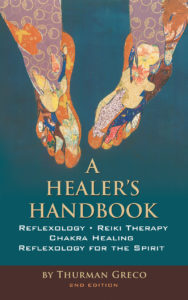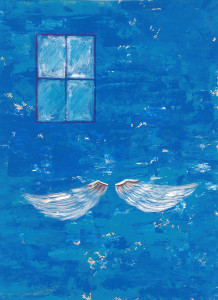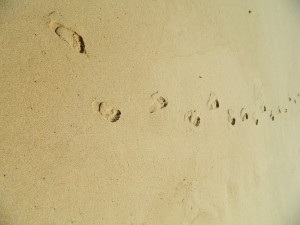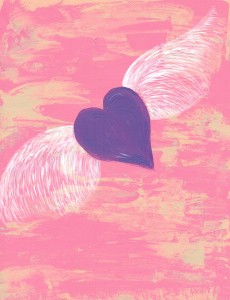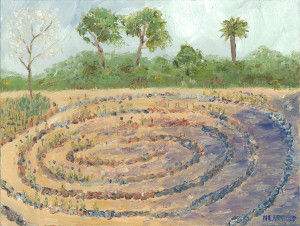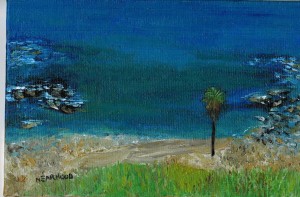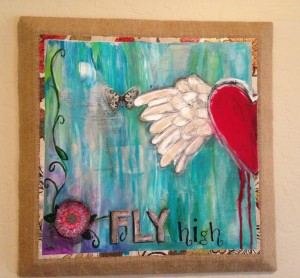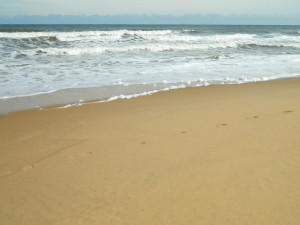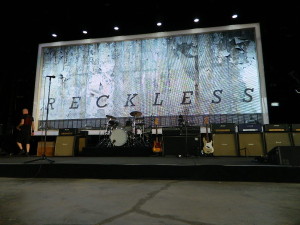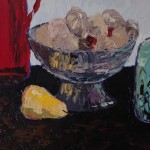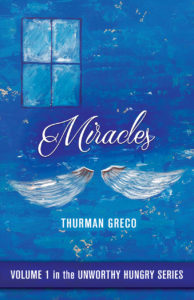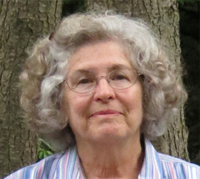A Reiki Practitioner’s User Manual – Part 2
When I studied Reiki, Mary Ruth Van Landingham’s classes and handouts were my user’s manual. They didn’t even begin to approach all the things Reiki can do for us all. I think Mary Ruth Van Landingham did that intentionally because we each write our own user’s manual.
Reiki is a unique and individual experience for each of us. Our attunements are the user’s manual for each of us.
I learned to practice Reiki on my massage therapy clients. Each one got a 10-minute Reiki boost at the end of the massage therapy session. Because Reiki was still unknown in my area, none of them had ever heard of Reiki. Their introduction to Reiki came during the last ten minutes of a massage therapy session so it came at a moment when they were blissed out, pain free, and totally relaxed. Needless to say, they all loved their Reiki.
This was good for me also because I was new to Reiki and was fearful about the results. It took a while for me to become accustomed to how Reiki worked.
I worried that they might not receive a proper introduction. So, what happened was that both my clients and I learned together. For starters, we learned to recognize my warm hands when I introduced Reiki into a session.
Over time, I learned that my hands warmed up whether they were on another person’s body, or my body, or a plant, or a car. Or whatever.
I learned to trust Reiki. This was a huge life lesson for me. I suspect it is also an important lesson for others as well. Many people go through life never learning to trust people, places, or things.
When I teach Reiki, I don’t think I even mention the word trust. The word floats above the classroom like a gorgeous cumulative cloud. It’s there for all to see.
A wonderful thing to do is practice self-Reiki to experience a regenerative sleep, easy your headache pain, feel comfortable in your body, or simply feel grounded.
Actually, it’s not necessary to do anything with Reiki. Just enjoy having received your Reiki attunement(s). Rest. Heal. Let Reiki be with you.
You do not give up anything to learn Reiki. Reiki does not test you in any way. Reiki is not a cult. It does not come between you and your religious beliefs. You do not need to change any of your core beliefs.
Instead, Reiki opens doors and windows of learning, opportunity, and enlightenment for you…if that is what you want. For some, changes are apparent, immediate, and outward. For others, changes are slow, careful, discreet. It all depends on you, your situation, your life path.
Some students, after receiving their attunements, internalize their new skills. Reiki is private, intimate, internal.
Other students use their newfound skills, practice Reiki and give sessions at every opportunity.
Neither way is better than the other. In all cases, Reiki assists you on your path. For me, there is nothing more beautiful than to travel one’s life path.
Thank you for reading this blog post. Please refer it to your preferred social media network.
Thurman Greco
Reiki – Is it in your toolbox? – Part 1
In these stressful times, we all need a toolbox because we’re all healers. And, we never know when we might need to use our healing tools.
Reiki is a basic healing tool that works almost anywhere, anytime.
Many of you reading this blog use Reiki. But, many don’t. Reiki was the basic skill which put me on my healing path. That’s not to say that I wasn’t healing. I’d been a massage therapist since the 1980’s. But, there’s a difference.
Before Reiki and after Reiki.
I’ll never forget the first time I heard the word: Reiki.
I was at a weekend continuing education class in Clinton, New York, at a place called Spring Farm CARES. There were about two dozen students in the class. As we each introduced ourselves to the group, every student, except me, mentioned Reiki. They were all either Reiki practitioners, Reiki Masters, or Reiki Master Teachers.
I had no idea what that was. But, as I returned to my home in the Washington, D.C. metro area on Sunday, I decided to learn about Reiki. Reiki, at that time, was not mentioned much in my area. To be perfectly honest, it wasn’t mentioned at all. I called around.
I eventually found two friends who practiced Reiki. One of them, a massage therapist, was a Reiki Master Teacher for years and never shared her secret. The other friend studied Reiki but wasn’t using it because she believed that it healed people whether or not they wanted to be healed.
I found Mary Ruth Van Landingham in Vienna, Va. She had a shop, Terra Christa, with a classroom in a building behind the store. I learned nine different kinds of Reiki in that little building behind Terra Christa. She taught most of them.
At that time, there were few to no books about Reiki. Mary Ruth’s classes were filled with handouts. Now, when I teach Reiki, I offer handouts and encourage students to read any Reiki book that attracts them. Book stores everywhere carry several titles. Overall, there are hundreds to choose from.
I spent a good bit of the next two years studying in the little classroom nestled behind the store. Mary Ruth invited other trainers to give classes. I studied under Tom Rigler, Rev. Dan Chesbro, and many others before I finally moved to New York State.
“Reiki is a light touch offered to a clothed body.” is the definition Pamela Miles offered at a class at the New York Open Center.
Over the years, I learned that everyone who practices Reiki describes it differently. I invite my students to define the Reiki experience. Everyone has a different description and definition.
The word Reiki means Universal Life Force Energy. Practitioners refer to Dr. Mikao Usui, the man who brought Reiki into the 20th century. He practiced in Japan prior to World War II.
Other prominent Reiki teachers during this time include Mrs. Hawaya Takata, and Dr. Hayashi.
I like to include Frank Arjava Petter who, at the end of the 20th century, wrote a Reiki handbook “The Original Reiki Handbook of Dr. Mikao Usui.”
Reiki works on the physical level when the practitioner uses her warm hands.
The Reiki symbols work on the mental level.
Emotionally, Reiki sessions bring peace and calm.
The Reiki practitioner as well as the session itself, offer healing which impacts the energetic body.
But, beyond working on the different levels of a person, Reiki heals without judging. The healing energy of Reiki doesn’t care whether a person is religious or spiritual or not. The healing path of a person receiving or giving Reiki is nondenominational, positive, accepting.
Reiki heals.
Reiki never makes exceptions because of one’s beliefs, health condition, situation in time, lifestyle.
Reiki doesn’t ask about one’s religious or spiritual beliefs. Reiki never cares whether a person is Buddhist, Christian, Jewish, Muslim, Hindu…or anything else.
I have an invocation which I use often when offering Reiki to someone. It’s not original with me. And, I’ve used this prayer often for many years. I offer an apology here. I don’t know where it came from.
Whatever or wherever its origin, I send gratitude to the writer of this prayer. (Maybe, after reading this blog post, someone will know where it originated and share the information with me.):
I call upon the essence of the Healing Buddha and the Master Spirits of Reiki.
(At this point, I include any and all names that seem appropriate. I may include Jesus, St. Michael, St. Anthony).
I ask that my hands and heart be illuminated by the light of your unconditional love. I ask that this session proceed for ………………’s highest good. Amen
When I’m offering Lightarian Reiki, I go a step further. I include a request to seal the room in the prayer.
Reiki accepts.
Reiki does not ask that you give up anything in order to use its energy. Mary Ruth Van Landingham was a practicing Catholic. My friend Kathy is a devout Episcopalian. I teach Reiki to people of all faiths.
Reiki sets no one’s beliefs aside.
Thank you for reading this article. Please refer it to your preferred social media network.
Please join me for part two of this series of posts about Reiki.
Thurman Greco
Practical Wellness: 10 Tips You Can Use
With this article , you and I move into part two of practical wellness tips in the longevity series. The focus shifts to information less disease focused. My hope is that you’ll adopt a few, or maybe more than a few, healthy habits and avoid or discard the habits in your life which lead to illness.
The best way to have a long and healthy life is to prevent disease and promote homeostasis while you adopt practical wellness tips which resonate with you.
As you adopt new wellness habits, you empower yourself and take control of your body and your health. You’ll be in charge of your physical, mental, emotional, and spiritual self. Practical wellness tips offered in these articles are often easy to adapt to your daily life.
Seeking a long and healthy life is an everyday proposition made easier when you adapt practical wellness tips which may change through time. You can always make improvements as new theories and practices become the norm.
As you adopt new habits, I hope you’ll consider the long term effects of the new directions you’re taking in your life.
Your body constantly moves and shifts which means you are different every single day from your cellular level on up. These new tips you adopt can change your life in small or large ways as your body self regulates toward wellness.
Adapt these practical wellness tips and changes to your age.
As a reflexologist and Reiki practitioner, this ability to change, move, develop means much to me. That is the heart of healing with the modalities I’ve been studying my whole adult life.
All of this points toward homeostasis – the balance of all body systems.
CHOOSE YOUR FATS WISELY – One of the most challenging things I’ve done with this wellness blog is tackle oils. If you go to the early blog posts, you’ll find articles reflecting how complicated life can get as you stand in front of the grocery shelf and choose a cooking oil.
The bottom line in cooking : Go with organic oils. Stay away from saturated fats whenever possible.
That means I buy organic olive oil.
I avoid saturated fats . Whipping cream is not a staple in my diet and I don’t eat much red meat.
Beyond that, things get a bit dicey. I don’t eat margarine because of the chemicals. I do eat butter.
Omega 3 Fatty Acids can be consumed by pills or by the spoonful. Choose your Omega 3 Fatty Acids carefully because they can be contaminated. I buy mine at the Village Apothecary here in Woodstock at 79 Tinker Street. I rely on my pharmacist, Neal Smoller, to educate me about which and how many supplements I should take.
How you deal with fats and oils in your diet is up to you, your health, and how comfortable you are with manufactured foods.
Personally, I’m not comfortable with manufactured foods so there’s not a lot of oil variety in my kitchen pantry.
WHAT ABOUT MINERALS? – The body uses many minerals and they don’t get near the attention that vitamins receive. Four minerals to concentrate on right now include Calcium, Magnesium, Potassium, and Selenium.
Calcium is found in broccoli, dairy products, pinto beans, and spinach. If you’re concerned about osteoporosis, this mineral is for you. Eating foods high in calcium is important.
Magnesium is not found in our diets often. Unless you eat apples, bananas, beans, brown rice, leafy green vegetables, and nuts, you should take a supplement.
Magnesium holds off heart problems, strokes, and lack of energy.
Selenium boosts the immune system. Any mineral boosting the immune system is a friend of mine.
Potassium is extremely important and is found in bananas. I eat a banana twice a week. Potassium combats hypertension, depression, muscle weakness, and fatigue.
BEWARE OF THE HOSPITAL! – We are all probably going to be in a hospital once or twice (or even more) before it’s all over. Lots of things can go wrong in a hospital. It’s your job as the patient to know as much as you can about the hospital you are going to be in, the doctor who is going to treat you there, and the condition you are trying to get treated.
I have reflexology clients who visit my table regularly because they feel it’s important for their overall wellness. They don’t ever plan to be in a hospital.
Regular reflexology sessions definitely promote homeostasis which is good for disease prevention. But, for a person to categorically plan to never be a hospital patient can be an unwise move. You never know when an accident can put you in an emergency room.
It’s important to know about hospitals and to be insured . It’s important to have a health care professional that you visit at least annually so you don’t get caught in a situation where you don’t know who can help you or how to communicate with the professionals there.
Hospital is its own language. If you don’t do these things to know the language, you may not have the vocabulary or understanding to make the best decision for your own health’s sake.
A healthcare advocate is important if you have a major encounter in a hospital setting. When you are injured in an accident, or are ill, you may not be alert enough to protect yourself. And, if you haven’t kept up with modern medicine, you may not be strong enough to protect your self.
INJURIES, FALLS, AND CAR ACCIDENTS – For every person who dies in an accident, fifty or so are injured and live. These fifty or so people may sustain minor injuries or multiple injuries or major injuries. A few of them will be disabled and/or have their lives shortened by the injuries received during the accident.
If you are interested in a long and healthy life, you do not want to be a part of those statistics. Because most injuries are preventable, accident awareness can be important to you.
Are you interested in avoiding accidents? If so, think back on the things your family and teachers cautioned you about when you were young.
Never drive buzzed.
Always wear your seat belt.
Never swim alone.
Keep stairways free of clutter.
Put non-skid strips in your bathtub.
I think you get the drift here.
DON’T BLAME YOUR GENES! – They count but the choices you make in your daily life count more. You are in charge of you. Your longevity is all about knowing that the things you do today affect your future.
If you read about something which everyone says is good for you and you disagree, follow up on your feelings. Ask questions. Get to the heart of the matter.
GET TO KNOW YOURSELF. – Spend a couple of months getting to know yourself and your body better. Ask yourself some questions and pay attention to the answers you share. Take some notes. The goal is to get a close look at your body. It is unique, the only one like it in the world.
How do you feel in general?
How well are you sleeping?
Do you have any aches and pains? If so, where are they?
Do you feel healthy?
Is it hard for you to get out of bed in the morning?
How bad is your stress level?
Are you happy?
What do you want to change in your life?
Ask your own questions. based on your individual age, physiology, values, beliefs, and your own personal circumstances.
TAKE SOME MEASUREMENTS! – This should be fun if you are into apps. Or, if you’re into a fitness watch. Mine keeps me active throughout the day as it reminds me when I’ve been sitting too long.
With a Fitbit or a Garmin, you can track everything you do throughout the day. This may not be such a bad thing. The point is that you become more aware of your physical, mental, emotional, spiritual self.
Once you track your body’s clocks, you can control your homeostasis patterns. Your can track your waking/sleeping cycles, eating times, physical activity patterns, and medication schedules.
When you do this, your body will function much more efficiently. It will have the opportunity to become finely tuned.
EAT REAL FOOD – If you can’t understand the words on the ingredients list, the product you are holding in your hand is probably not food. Most likely, it is a selection of chemicals that have been manufactured and blended for human consumption.
Stay away from these manufactured products if you are interested in health and longevity.
Ideally, the food you eat will be just that: food. Select foods that are fresh or flash frozen.This means you will shop mostly from the produce aisle or frozen food aisle.
MAKE THE PRODUCE MANAGER, THE BUTCHER, AND THE WOMAN BEHIND THE FISH COUNTER YOUR BEST FRIENDS – They will tell you where the food came from, which selections are the best buys. They know the farmers and ranchers who supply the supermarket with the food you are buying.
When you go to the farmer’s market, get to know the people selling the food in the stalls. These are the people who are supplying you with the best available, locally grown foods.
You just can’t get better than this.
EAT THE FOOD THAT WORKS FOR YOU – Every time I go into my local book store, I see a new selection of cookbooks promoting another new diet/eating lifestyle. Their practical wellness tips may or may not be included in these cook books. It all depends on the ingredients that the author suggests in the recipes. The truth is that I support the diets that depend on fresh, locally grown food.
Important for any diet you adopt: You must enjoy what you eat. Traditional diets will outrank any diet that relies on manufactured ingredients. Processed food is not good for anyone.
Thank you for reading this article. I hope you enjoyed it. And, I hope you’ll share it with your preferred social media network.
Thurman Greco
Woodstock, New York
.
